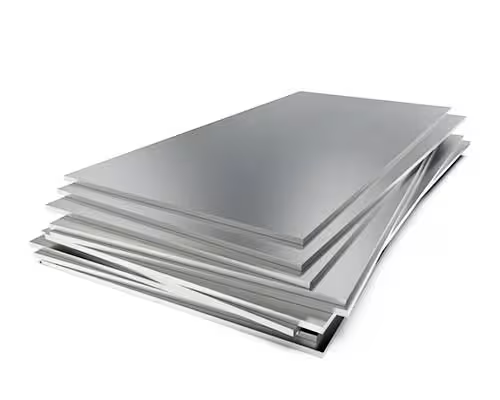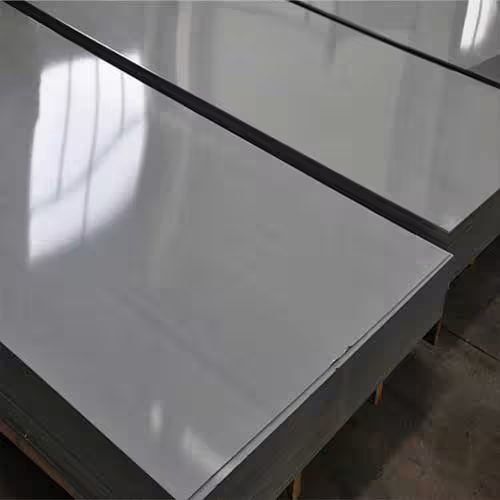Welcome to My Blog!
Before we dive into the content, I’d love for you to join me on my social media platforms where I share more insights, engage with the community, and post updates. Here’s how you can connect with me:
Facebook:https://www.facebook.com/profile.php?id=61565500692293
Now, let’s get started on our journey together. I hope you find the content here insightful, engaging, and valuable.
Table of Contents
Introduction

Stainless steel is one of the most widely used materials across industries like construction, automotive, aerospace, and manufacturing. Its corrosion resistance, strength, and aesthetic appeal make it a go-to choice for many applications. One key factor in determining the right stainless steel for a project is the stainless steel plate thickness.
The correct thickness of stainless steel plates plays a vital role in ensuring that the material performs efficiently under the required conditions. Whether it’s for structural components, kitchen equipment, or medical devices, the right thickness can affect the strength, durability, and cost of the material.
In this blog, we will explore the factors influencing the selection of stainless steel plate thickness, the various thickness options, and how to make the right decision for your project.
Factors Affecting the Selection of Stainless Steel Plate Thickness

Application Requirements
The application of the stainless steel plate largely determines the thickness required. Environmental conditions, load-bearing requirements, and durability expectations are essential factors when selecting the right thickness.
Structural Applications
In structural uses such as beams, frames, and load-bearing supports, thicker plates are typically required to ensure strength and stability.
Decorative and Kitchen Applications
For applications like kitchen countertops, sinks, and decorative finishes, thinner stainless steel plates may suffice, where strength might not be as critical as aesthetics and ease of fabrication.
Medical and Food Equipment
Medical devices and food processing equipment require stainless steel plates with certain thicknesses to meet hygiene standards, be resistant to corrosion, and withstand regular cleaning.
Mechanical Properties and Strength
Thicker stainless steel plates offer increased strength, making them more resistant to bending, deformation, and impact. This is particularly important in high-stress applications such as aerospace or heavy machinery manufacturing.
Corrosion Resistance and Environmental Conditions
The thickness of the stainless steel plate also affects its ability to withstand environmental elements such as chemicals, moisture, and extreme temperatures. Thicker plates provide enhanced protection against these factors, increasing the material’s longevity.
Fabrication and Processing Capabilities
The complexity of the fabrication process is another factor that influences the selection of plate thickness. Thicker stainless steel plates may require specialized cutting and welding techniques, while thinner plates are generally easier to handle and fabricate.
Weight and Handling Considerations
Thicker plates are heavier, which can add to transportation costs and make installation more challenging. If weight is a crucial factor in your project, such as in automotive manufacturing, the right thickness needs to be balanced with the material’s strength and performance.
Common Stainless Steel Plate Thicknesses
| Thickness (mm) | Common Applications |
|---|---|
| 0.5 – 1 | Kitchen equipment, decorative panels |
| 1 – 3 | Industrial machinery, medical devices |
| 3 – 5 | Structural components, heavy-duty equipment |
| 5 – 10 | Construction, automotive, aerospace |
| 10+ | Marine applications, pressure vessels |
The table above outlines some common thicknesses for stainless steel plates, along with their typical applications. It’s important to note that the specific grade of stainless steel used should also be considered in conjunction with the thickness.
Choosing the Right Stainless Steel Plate Thickness for Your Project

Assess Your Project’s Structural Requirements
Before choosing the thickness, it’s important to understand the mechanical load and stress the material will endure. Thicker plates are usually needed for applications requiring high strength, such as structural engineering projects.
Consider the Environment of Use
For applications exposed to extreme weather conditions, chemicals, or high humidity, selecting stainless steel plates with sufficient thickness is crucial to prevent corrosion and degradation. Marine and chemical processing environments may require thicker plates than typical commercial uses.
Factor in Cost and Budget Constraints
Thicker stainless steel plates are more expensive due to higher material costs and complex processing needs. If your project doesn’t require high strength or durability, choosing a thinner plate may be more economical while still meeting performance requirements.
Review Fabrication Needs
Ensure that the selected thickness aligns with your fabrication processes. Thicker plates might require additional cutting or welding processes, which can be more time-consuming and expensive.
Evaluate Long-Term Durability
Consider the long-term needs of the project. If the material will be exposed to wear and tear or high-stress conditions, selecting a thicker plate ensures better longevity and fewer replacements or repairs down the line.
Conclusion
Selecting the appropriate stainless steel plate thickness is crucial for ensuring that the material performs as expected in its application. The thickness choice will depend on various factors such as the strength requirements, environmental exposure, fabrication needs, and overall cost considerations. By carefully evaluating these factors, you can select the correct thickness to meet the demands of your project without overspending on unnecessary material.
While thicker plates offer more strength and durability, they come with higher costs and may require more complex fabrication. Therefore, it’s essential to balance strength, weight, and cost when determining the ideal thickness for your project.
FAQ
What are the standard thicknesses for stainless steel plates?
Standard stainless steel plates typically range from 0.5 mm to 10 mm, with thicker plates being used for specialized applications.
How does stainless steel plate thickness affect corrosion resistance?
Thicker stainless steel plates generally provide better protection against corrosion, especially in harsh or chemically aggressive environments.
Can I use thinner stainless steel plates for structural applications?
For structural applications, thinner plates may not offer enough strength or stability. Thicker plates are typically required for heavy-duty applications.
How do I determine the right thickness for my project?
You should consider factors such as the mechanical load, environmental conditions, fabrication complexity, and budget to determine the correct thickness for your project.
Does stainless steel plate thickness affect the cost?
Yes, thicker plates are more expensive due to higher material costs and more complex processing needs.

